Ghost Stories from Around the World
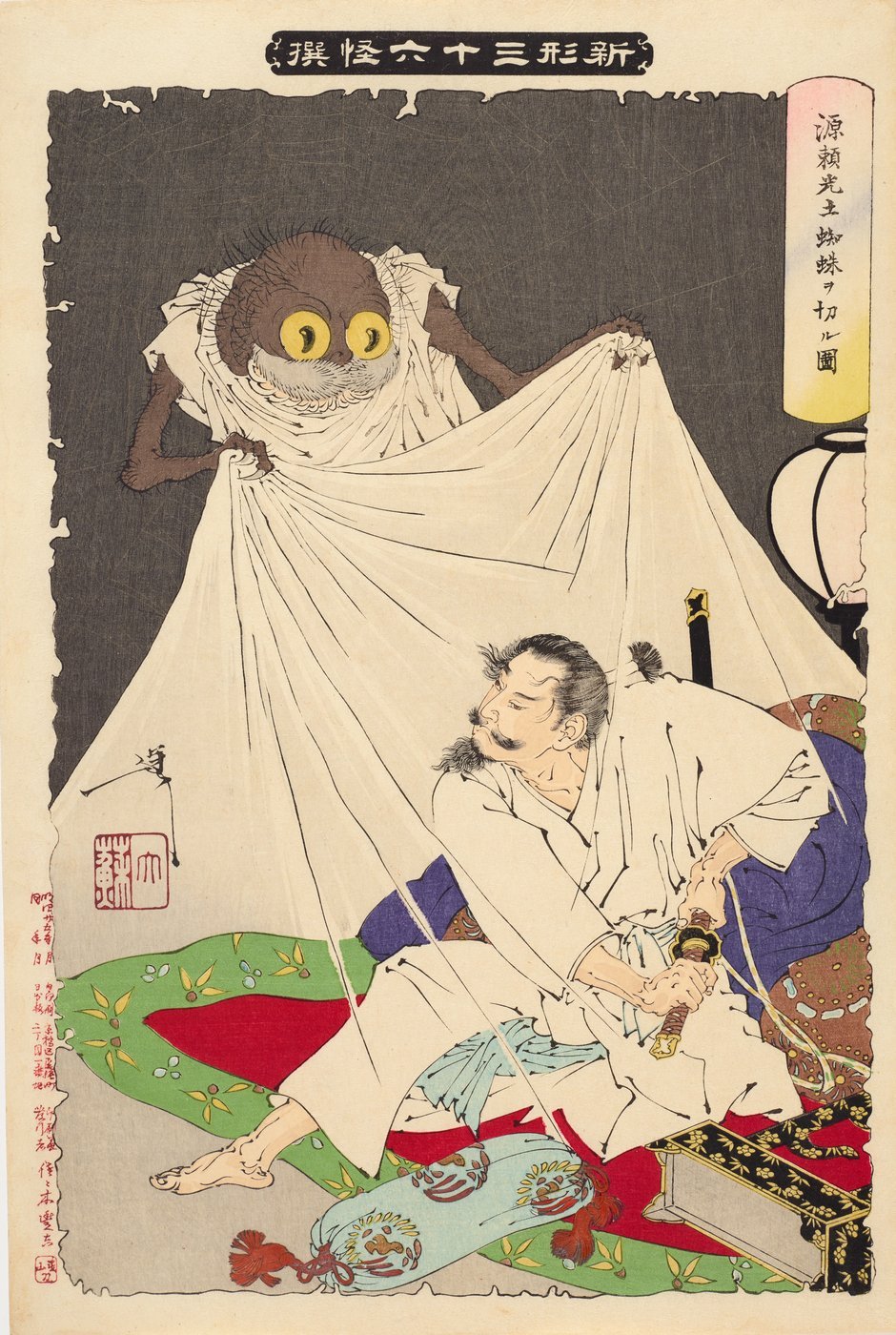
The exposure to terrifying facts and the anticipation of being scared stimulates us mentally and physically; it produces adrenaline, heightens sensations and provides a surge of energy.
Ghost and horror stories allow the reader to experience alternative realities, providing a sense of adventure. It feeds a sense of curiosity and provides readers with a descent into the dark part of the human psyche.
To enjoy horror stories, the reader needs to feel; that evil cannot escape the pages or the TV screen. Consuming horror gives a sense of being in control of dangers that exist in the real world.
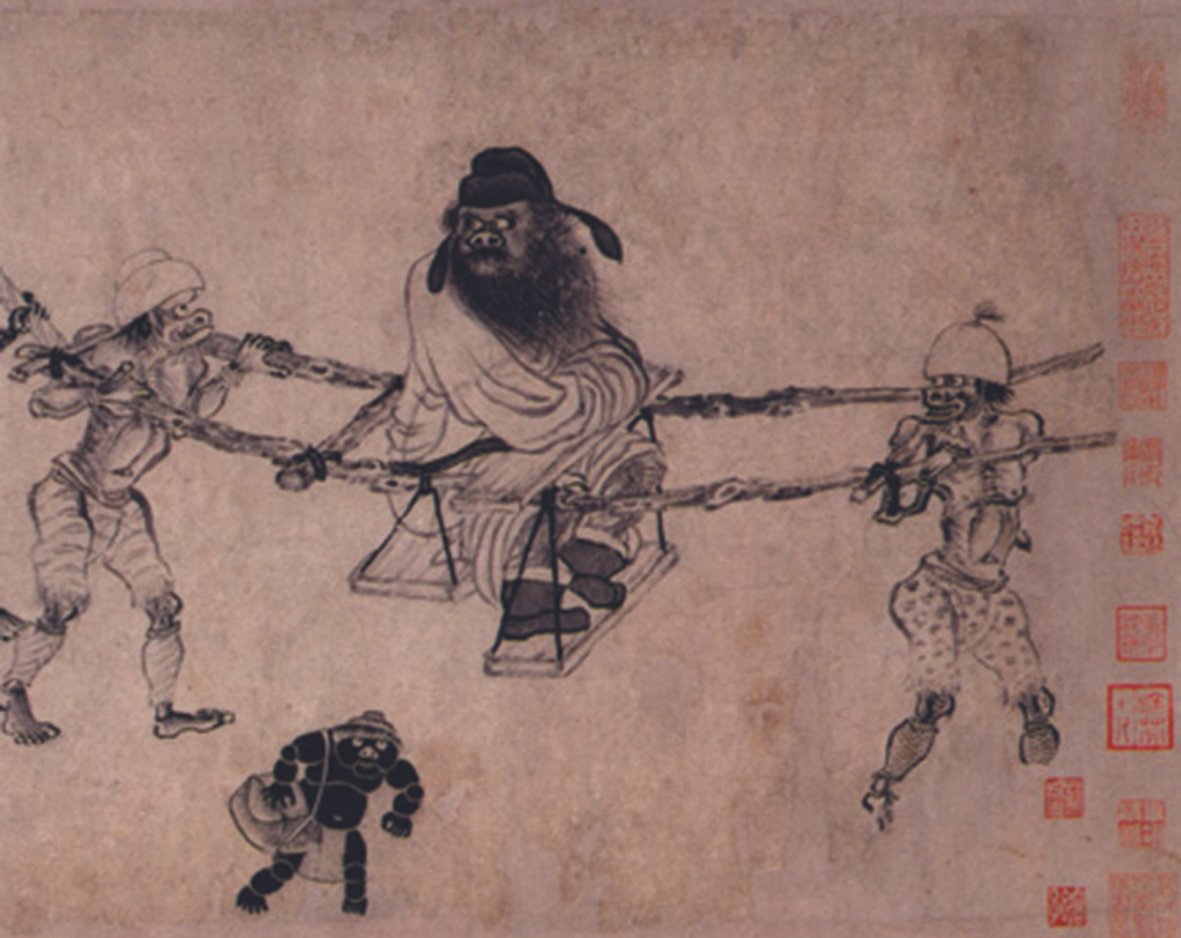
Once the horror story is over, readers can relax. The heightened awareness during a horror experience is replaced with a sense of relief after a positive conclusion (evil is defeated), triggering the release of endorphins in the brain, leaving the reader relaxed and refreshed.
Now please enjoy our exhibition. Why not tell us about your favourite horror or ghost story?
The earliest reference to a costume worn on Halloween is from Scotland, in 1585. For centuries people dressed up for Halloween events. Anthropologists theorize that the costume may originate from the idea that on the holiday we now call Halloween, called many other things such as Hallows Eve, Samhain, and Calan Gaeaf, among others, was a time when spirits were able to roam the Earth more easily. The tradition of going door to door dressed in costume may have originated as people impersonating spirits to receive blessings and prayers. Other ideas surround the fact that disguising oneself offered protection from the spirits roaming at that time.
Halloween would develop with time, photos show people have long since dressed as non-scary things, like historical or fictional characters, or animals; one photo depicts a group dressed as mushrooms. Halloween parties, sometimes referred to as ‘fancy dress’ parties, were hosted by families all over North America and Europe. With time however, people became upset at the increase in mischief and vandalism that Halloween brought, and as such, people were encouraged to stay at home, while children became the target audience for the holiday. This was increasingly reinforced as Halloween became more commercialized in the 1920s and 1930s. It was around this time that masks were often ditched in costumes, as they were thought to contribute to the vandalism, mischief, and even riots that sometimes occurred.
Today, people continue to dress up as historical, or fictional characters. Many of the most popular Halloween costumes have been that way for decades. Many Edwardians can be seen dressed as witches, ghosts, and clowns. One Victorian guide shows some costume examples one might have used for inspirations, among them are goblins, what perhaps today would be called a devil, a butterfly, a bee, and a nurse; all of these are still common costumes today.
Even things that take place in the real world, such as a haunted house, have this so-called “safety framing” in place, we understand that the experience isn’t true, that the zombies in the house are actors, and that the blood is fake. Some have argued that seeing a horror movie is cathartic in the way that we are able to live out or experience anxieties about these situations that are otherwise impossible.
Perhaps reading and experiencing these stories can teach us to face a dangerous world. While many of these stories are clearly fantastical, some stories maye have had roots in reality. Campfire stories told for generations may have begun as a way to teach us about scary things, and how to avoid them.
Horror can also be an attempt to rationalize and understand what is unknown. Humans have long since feared the unknown and unknowable, likely for its potential to harbour danger. Horror however often seeks to give explanation and reason to mysterious disappearances, placing the responsibility on the shoulders of a monster, in effect, horror provides an answer. But horror too asks questions, leaving us wondering about how the monsters are able to rise from the dead, keeping our curiosity hungry and coming back for more.
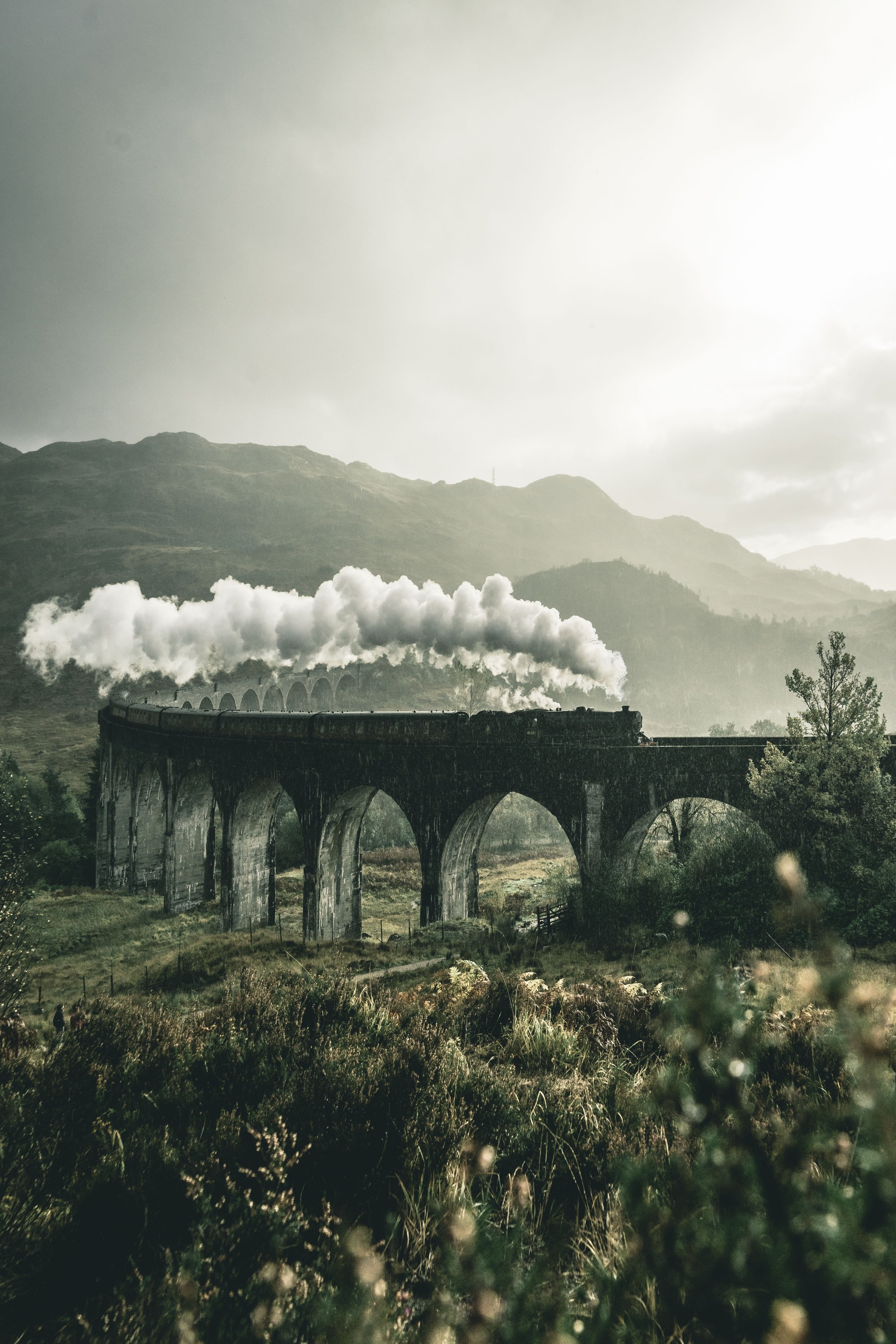
Fear is an emotion that everyone has. Fear is a valuable trait, stemming from the fact that early humans were not a secure space as people are today. Many fears like that of poisonous animals like snakes and spiders, or that of the dark, come from these early self-preservation instincts. So why then do people like to stimulate this feeling?
This is something that psychologists have tried to answer for many years. Some have posited that it is perhaps due to a thrill seeking nature. People enjoy horror movies and stories, and by extension being scared, for the same reason that they enjoy riding on roller coasters or skydiving. Psychologists have argued that people enjoy horror stories in this way because of the fact that at the end of the day, they are just stories without the potential to really hurt a person.
Roland Losslein from Unsplash
HORROR & ww1
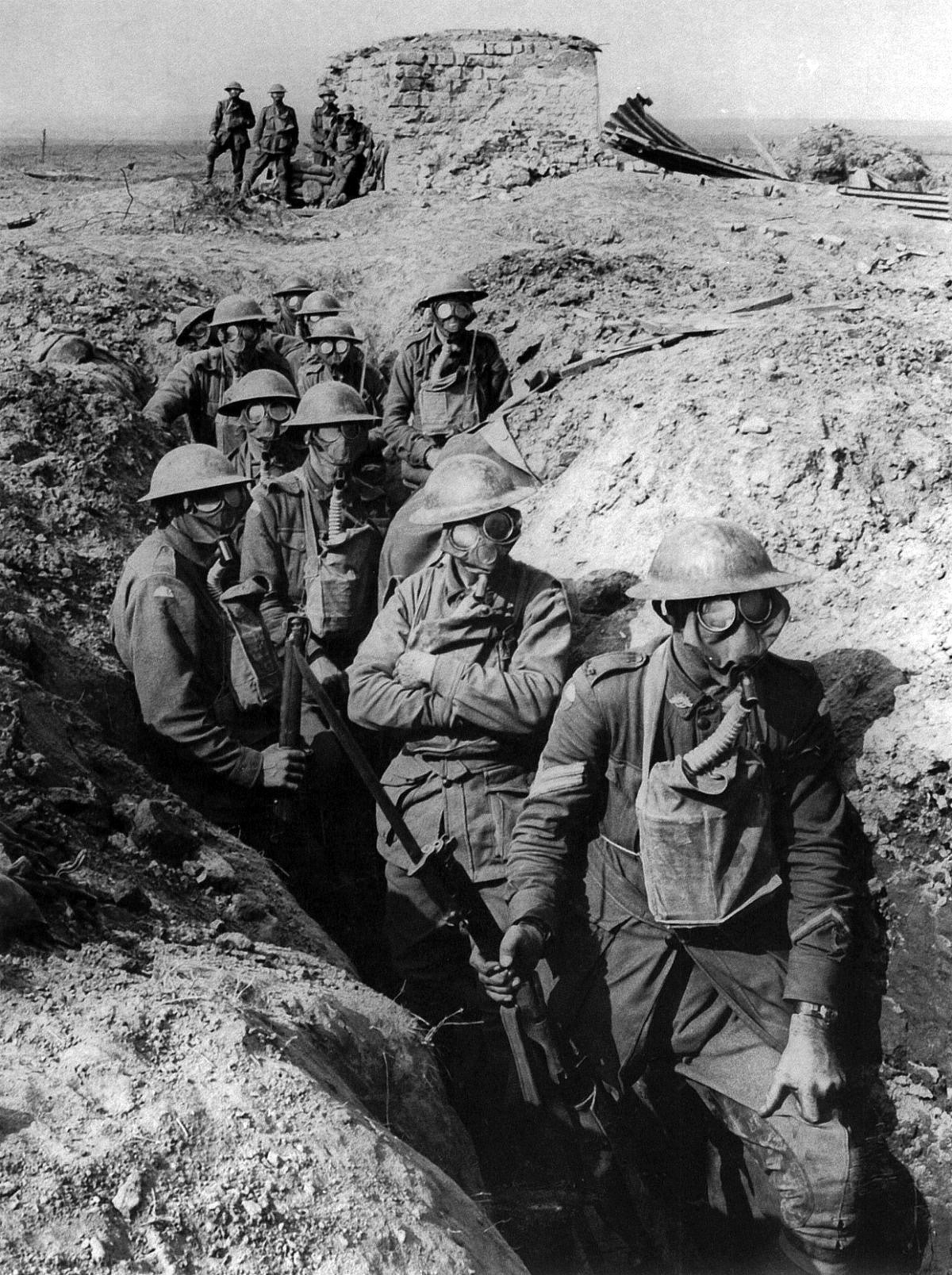
Horror, from the French author Pierre de Mazenod’s horreur was meant to describe the First World War. Scholars have discussed the ways in which the terror and destruction of the Great War have influenced a generation of writers and artists and how their work went on to shape modern horror stories today.
The Great War brought about the fear of the dead on a massive scale. This primal human instinct was confronted by millions of men, placed in a desolate and unforgiving landscape, surrounded by the corpses of millions more people like them. Former friends or enemies lay dead in countless numbers, many of whom were unable to be given a proper burial. These figures were often disfigured and unrecognizable. The Great War’s new weaponry changed the ways in which people fought, and how people died. Gas attacks left victims scarred and bloated, while mass artillery decimated people, leaving only remnants of bodies.
After the war ended, veterans of the conflict continued to live with this imagery. The public was exposed to the faces of men who had been terribly disfigured. Cosmetic surgery was in its infancy, doctors did what they could to correct horrible disfigurations like missing jaws with painted mask often held in place by fake eye glasses.
Ladd working on a mask with a soldier in her studio. Wiki Commons
The haunting imagery of World War One influenced many of the pioneers of the horror film genre. Nosferatu, Dracula, Frankenstein, all iconic films of their era were staff ed by many veterans of the conflict, for them, these pieces were a way to share the horror of the war. Dracula, who rises from his coffin, was played by a man named Bela Lugosi who literally rose from the dead, hiding under a pile of corpses to shelter from an enemy attack. Other films were more explicit, J’accuse from 1919 and its 1938 remake deal with the fears and anxieties of the soldiers in the trenches. Both films result in a climatic rising of the dead, with veterans disfigured by the war playing the part. The remake of the film leans more into the army of the dead, with the dead of nations beyond France also rising. More effort being put into the effects to create a truly scary scene. This work would affect many filmmakers to come, perhaps most notable, George Romero, a pioneer of the zombie genre. With his films in turn influencing many other forms of zombie media.
The German stahlhelm, or steel helmet became another part of iconic imagery following the Great War, its marker as a part of the typical evil uniform only growing after the end of the Second World War. The helmet’s infamous silhouette has appeared notably in the Star Wars films, the association of evil and fear are connected to it. The fear that entente associated with the helmet continued to spread and influence media decades after the war.
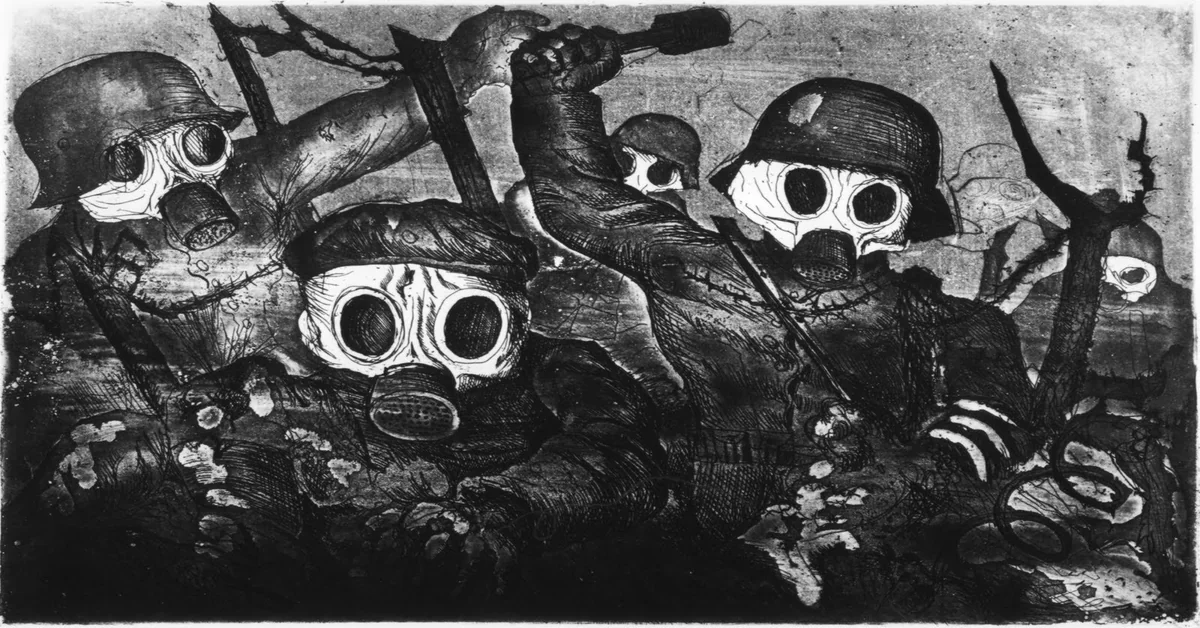
While not often thought of as horror media, J.R.R. Tolkien’s The Silmarillion was begun by him during the First World War. Although this book would not be published until 1977, after his death, it was the backbone of his more well known works, The Hobbit, and The Lord of the Rings trilogy. Tolkien’s experiences of the horrors of war are thought to have contributed partly to some of the more terrifying events and environments in his stories.
World War One has contributed many of its aspects to the horror genre. What had been known as “weird” fiction would be called horror fiction. The horror film would have its definitive beginnings in The Cabinet of Dr. Caligari, Nosferatu, Dracula and Frankenstein, all of them directed, written or starring veterans who found in such films a way to speak of the horror that they expedience during the war. The imagery of German shock troops, faces concealed by gas masks is imagery that has been expanded and replicated across many forms of media. This imagery perhaps stems from Otto Dix’s Stormtroops Advancing Under Gas from 1924.
Otto Dix’s Stormtroops Advancing Under Gas from 1924
TYPES OF HORROR
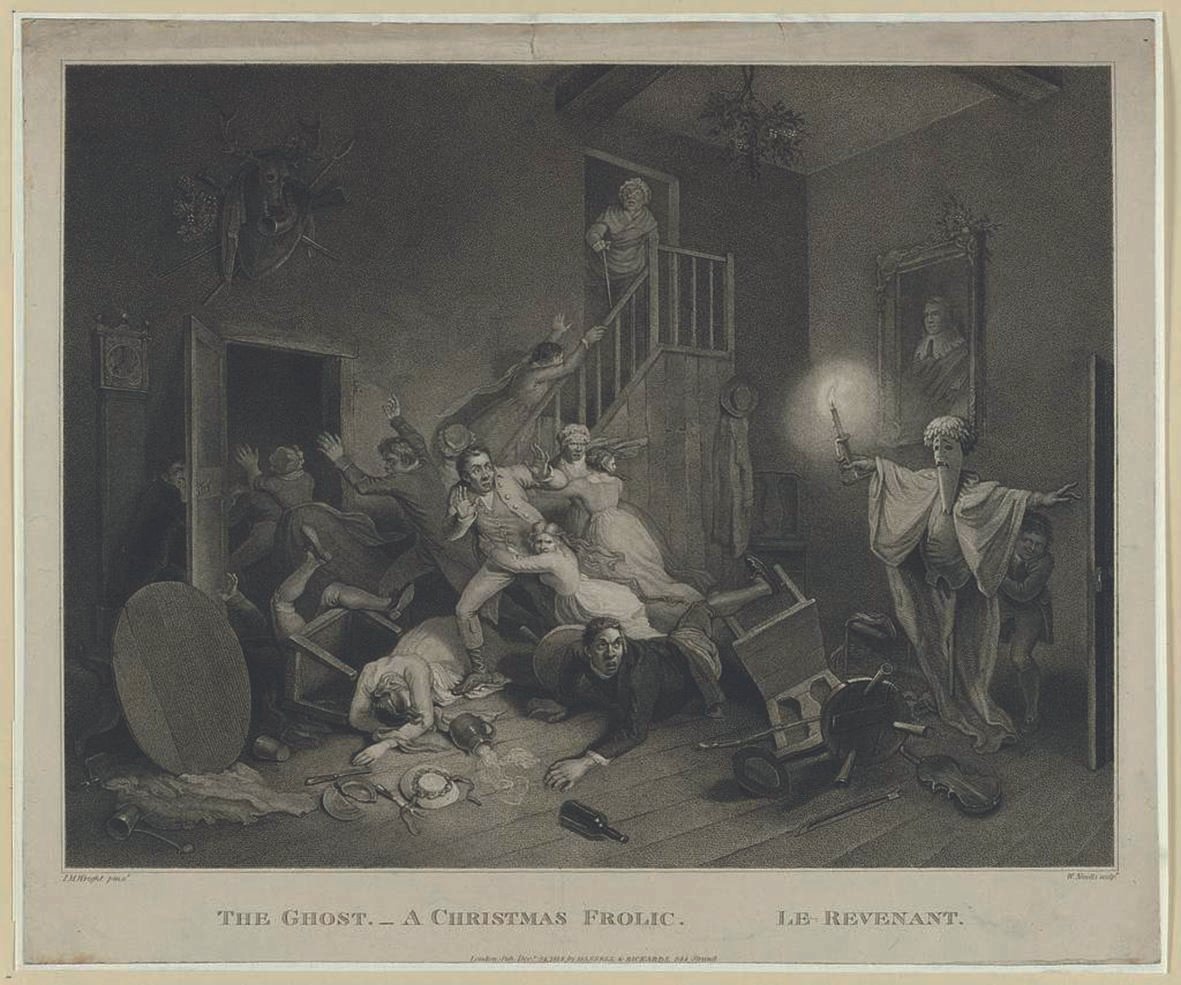
cosmic horror
Lovecraftian horror, also referred to as cosmic horror, is a genre pioneered by H.P. Lovecraft . It centers on fear of the unknown, in essence, horror beyond one’s comprehension. Cosmic horror takes away control and agency, creating a feeling of helplessness. John Carpenter’s The Thing, and Stephen King’s The Mist are examples of cosmic or Lovecraftian horror.
Ghosts
Ghost stories trace their roots further back than recorded history, anthropologists speculate that condensed breath may be the origin for the popular depiction of the ghost as a white misty form. A ghost is the spirit of a person remaining after the death of their physical body, many times linked to an act of revenge or some unfulfilled business. Ghosts have come in many forms, most commonly thought of as a non-corporeal misty form. However other ghosts appear as humanoids, sometimes complete with the wounds that killed them.
Macabre
Macabre is not necessarily a genre of horror, it means simply for something to have a grim appearance, often featuring the details of death. Macabre is often attributed to physical artwork, or in the setting of horror media. It creates unease and a sense that something is not right.
Monsters
Monster literature is a form of horror literature. Some of the most famous stories of monster literature are Dracula, Frankenstein and Strange Case of Doctor Jekyll and Mr Hyde. Many of these stories have themes of science and the supernatural. Characters are frequently isolated and alone. Duality is another common theme, with humans sometimes being ‘the real monsters.’
Psychological horror
Psychological horror exploits human psychology, playing on fears of distrust, doubt, and paranoia. Common themes are of characters questioning their sanity, unsure if the events taking place are real or not. In movies lighting and sound are often used to create unease in the viewer in psychological horror films. The Silence of the Lambs is one well-known example of psychological horror.
Survival horror
Survival horror is a horror genre exclusive to video games. Unlike in other games, the player is less in control, while having the ability to fight, the player may be limited due to a lack of resources, or enemies that are far stronger. Common attributes of the genre are evasion, resource management, puzzle-solving, and a scary environment. Survival horror can be seen as an expansion of horror films, with many of the same camera tricks being used to allow monsters to hide from the protagonists to scare them. The origin of the genre is credited to the 1996 Resident Evil.
Image Credit: The ghost - a Christmas frolic - le revenant / I.M. Wright pinxt. ; W. Nicolls sculpt., British Cartoon Print, Library of Congress
Vincent Price is one of the most recognizable names in horror. He has starred in many horror films across his decades long film career. Price has also lent his voice to such productions as Scooby Doo and the voiceover opening of Michael Jackson’s Thriller.
Vincent Price’s first horror role was the 1939 film Tower of London, playing the titular character in The Invisible Man Returns that same year. Price would go on to star as many horror villains throughout his career. He portrayed a variety of characters in multiple radio dramas during the 1950s and 70s. He was a fan of the work of Edgar Allan Poe, appearing in the Hammer Films adaptation of The Raven in 1963. Price lent his voice to several recordings of Poe’s work as well. He appeared alongside many other iconic horror actors in 1983’s House of the Long Shadows. 1993 saw his last major role as the inventor in Edward Scissorhands. Despite often being remembered as playing vampires, Price only appeared as one once, later in his career. He never played the most famous vampire, Dracula.
Price was an art lover and collector, amassing a large collection of artworks from across the globe over his life. He began donating some of it to what would become the Vincent Price Art Museum, beginning with 90 pieces in 1957. Today, the museum has over 2,000 pieces donated by him.
horror from around the world
A look at box office data from 82 countries revealed that the consumption of horror differs, varies with economic development. Individuals from countries with a higher GDP per capita consumed horror movies to a greater extent, this was not observed for other movie genres such as romance. One possible explanation could be that limited financial resources degrade the psychological protective frame needed for horror enjoyment. Naturally, cultural norms and religion are also at play.
Japanese Horror
Japan’s horror stories date back centuries. They feature ghosts and poltergeists or entities like the yōkai, all with strong roots in traditional folklore. The term yōkai comes from the Japanese for suspicious and doubtful. There are many types of yōkai, shape-shifting being perhaps the most common trait. Some seek to harm humans, while others are benevolent; others simply want to play tricks. In the traditional Noh theatre, stories of vengeful spirits were popular and influenced later horror works.
Japanese horror grew immensely following the Second World War and the nuclear bombings of Hiroshima and Nagasaki. The genre of Kaiju features giant monsters destroying cities, an allusion to the nuclear attacks.
Japanese horror films are known for psychological elements, rather than jump-scare horror as seen in Western. Kwaidan, 1965, is based on traditional folklore horror and is notable for establishing the trend of women with long unruly hair, a fi xture in many Japanese horror films. (The Ring.) Some of the best-known Japanese horror fiction are work by Junji Ito. Ito has said that his works are inspired by everything from his parents’ stories of war to his surrealist dreams.
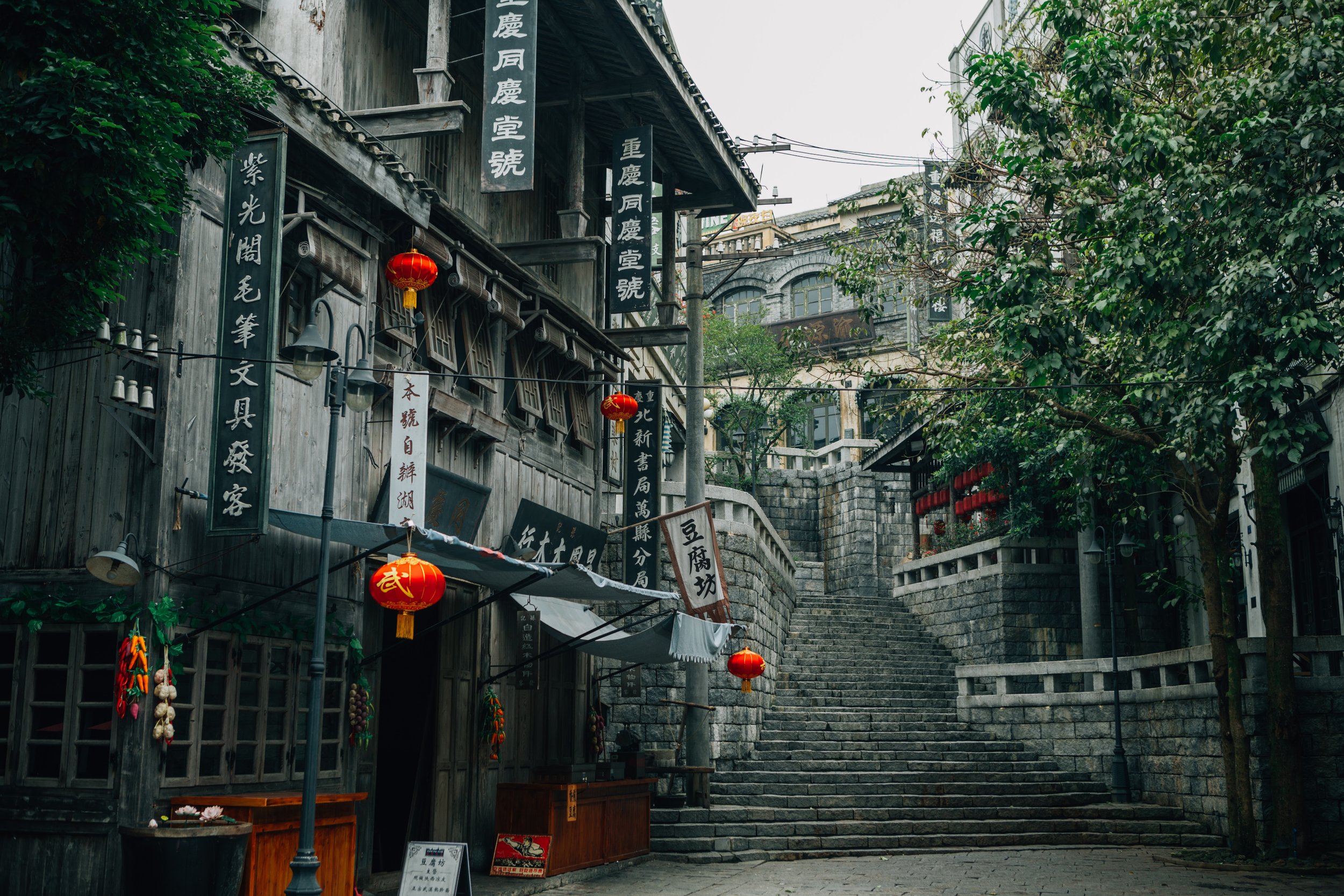
Chinese Horror
Chinese Jiangshi horror first appeared during the Qing Dynasty. The Jianshi is a corpse reanimated by a Taoist priest. The Jianshi hops rather than walks and absorbs one’s life force. In 1930 Hong Kong films like Midnight Vampire, were very popular.
These films differed from Western Vampire films due to the use of martial arts, adding elements from the kung-fu films of the period. In the 1989 film Vampire vs. Vampire, Jianshi clashed with Western vampires.
Danny Ryanto from Unsplash
Indian Horror
In India the horror genre was considered to corrupt the youth and the government tried to curb the genre. Despite this, audiences flocked to the theatres. The 1949 film Mahal is considered India’s first horror film after gaining independence. The dark atmospheric film uses music to create an eerie atmosphere, without the need for frequent death or violence.
In the 1970s Indian horror began to flourish. Hits like Nagin, 1976, by director Rajkumar Kohli mixed horror and fantasy.
In 2003, Bhoot is credited with bringing Indian horror back to the box office. The Yakshi genre encompasses both vampires and witches, some of these films may not contain many horror elements, instead taking a religious stance. Indian horror often uses monsters and villains to create commentary on social issues. Subjects such as caste restrictions, non-hetereronormative relationships, and environmental topics are all commented on through the lens of horror.
Korean Horror
After World War 2 and with increasing Western influences, Korean horror films began in earnest. The 1960 film The Housemaid laid the groundwork for later films. Featuring little supernatural horror it introduced the central staircase as a plot device.
Later films like A Devilish Murder, draw heavily on The Housemaid, like protracted flashbacks and a controlling mother or mother-in-law. The trope of mother figures as villains in these films would prove to be a mainstay in the genre. Unlike its predecessor, A Devilish Murder becomes increasingly violent, featuring supernatural elements and decades-long plots.
Korean horror remained relatively obscure until the 1990s. Most of the films considered genre-defining are from the 1990s and early 2000s. A Tale of Two Sisters from 2003 is an adaptation of a Joseon dynasty folk story. The movie features two sisters and their dealings with mysterious ghosts and their stepmother. The film features many psychological themes, a common aspect of the modern Korean horror film.
Black Horror
Horror films are often comments on social or political issues. Villains and monsters represent fears and taboos, such as in Jordan Peele’s 2017 Psychological horror Get Out. Get Out follows a young African-American man and a white family attempting to effectively turn him into a slave while gaslighting him into a state of compliance.
It is deeply personal for director Jordan Peele to express his own experiences and fears. The villains in the film are not “typical” racists, but middle-class liberals, drawing attention to the fact that despite not having the outward appearance of racists, the whites in the movie actively work to harm and reduce Black characters.
The genre of Black Horror (“Blacula” (1972) and “Blackenstein” (1973) and more recent shows centred around Blackness like “Us” (2019), Misha Green’s “Lovecraft Country” (2020), Little Marvin’s “Them” (2021) and Nia DaCosta’s 2021 sequel to “Candyman” (1992) address the horror a Black audience feels when their mere presence can itself be a source of terror to others in a systemic racist society. Horror movies provide a way to deal with real-world brutality and racism. This reaction is not unlike the increased creation of horror in the wake of the Great War.
European Horror
Many Western horror genres trace back to Ancient Greece. Pliny the Younger is the original creator of the haunted house story.
Gothic stories are fundamental for many future horror stories such as Mary Shelley’s Frankenstein. In the early 1900s periodical publishing, led to a boom in horror writing. It is during this time that many of the famous horror genres still popular emerged. Serial killers like Jack the Ripper laid the foundation for slasher horror.
Indigenous Horror
Indigenous history and horror are often closely related. The trope of “Indian burial grounds’’ upon which a haunted house stands is seen in countless horror films. In zombie and pandemic literature, characters have their civilizations wiped out; these stories are real to the Indigenous population of the Americas where European settlers brought diseases and death.
Perhaps the most well-known, is the Wendigo, a cannibalistic creature native to Algonquin folklore. The Wendigo is associated with winter, starvation, and cannibalism. The creature is often depicted as a giant, larger than a human. Wendigo’s hunger and cannibalism are often understood as greed and gluttony.
Another common story is that of the Mosquito Man. This story tells the tale of how mosquitoes came to be. When passing a newborn child around, the Mosquito Man eats the infant’s brains. The onlookers are horrified. After many are killed, the survivor manages to trap the man beneath a lake, lighting a fi re atop him from which mosquitoes spread.
Internet Horror
The internet and video games, further expanded the genre when in the 1990 survival horror games such as Clock Tower and Alone in the Dark appeared. Both feature haunted buildings which the player must explore and overcome. “Creepypasta” is an internet horror story. Stemming from the words “creepy” and “copypasta” which derives from copying and pasting, creepypasta is a form of viral copied and pasted horror stories that have spread across the internet. Many of these stories center on haunted games or serial killer figures such as Slenderman.
Book and Film Suggestions
-
The Ghost Bride by Yangsze Choo
Certain Dark Things by Silvia Moreno-Garcia
The Children (Los Niños) by Carolina Sanín
Fledgling by Octavia E. Butler
Beloved by Toni Morrison
Frankenstein in Baghdad by Ahmed Saadawi
Water Ghosts by Shawna Yang Ryan
Skin Folk by Nalo Hopkinson
Let’s Play White by Chesya Burke
Kwaidan: Stories and Studies of Strange Things by Lafcadio Hearn
Another by Yukito Ayatsuji
Never Whistle at Night - Edited by: Shane Hawk and Theodore C. Van Alst Jr.
Sisters of the Lost Nation - Nick Medina
Bad Cree - Jessica Johns
Mongrels - Stephen Graham Jones
Winter Counts - David Heska Wanbli Weiden
Shutter - Ramona Emerson White Horse - Erika T. Wurth
Banshees, Werewolves, Vampires, And Other Creatures Of The Night: Facts, Fictions, And First-hand Accounts by Varla Ventura
-
The Ring
The Grudge
Bodies, Bodies, Bodies
Midsommar
Get Out
Us
Nosferatu
It
The Shining
Happy Death Day
Old Boy
Train to Busan
Goosebumps
Deleter
Birdshot
Casper
Interview with a Vampire
What We Do in the Shadows
A Quiet Place
Bird Box
Parasite
Monster House
Sixth Sense
It Follows
Hush
The Addams Family
-
Hotel del Luna
The Guest
Sweet Home
Revenant (2023)
Haunting of Hill House
Bates Motel
Lock & Key
Castle Rock
Wednesday
Lovecraft Country





